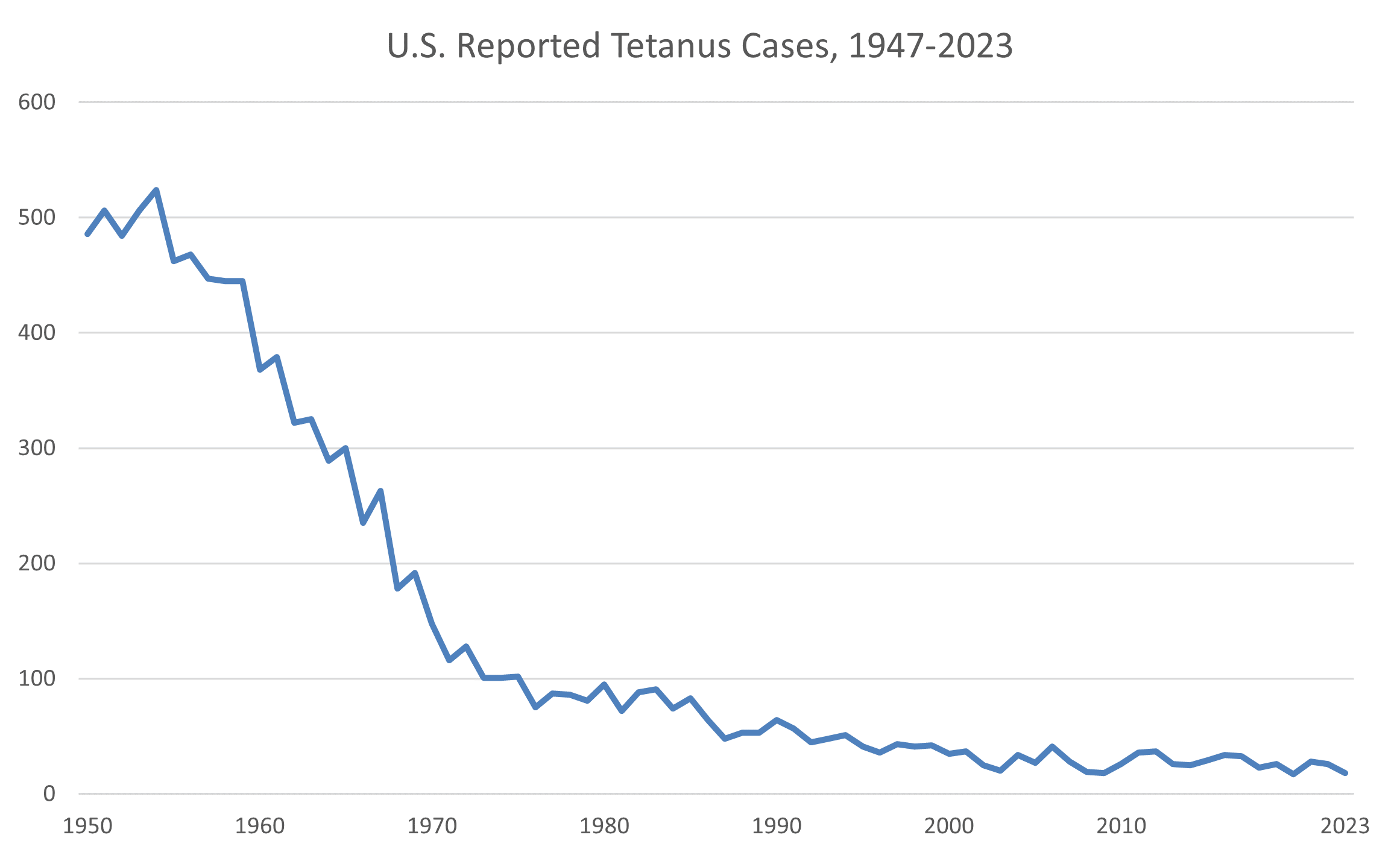Key points
- CDC tracks tetanus cases using a national surveillance system.
- Tetanus cases are rare in the United States and have decreased significantly since the late 1940s.
- Follow CDC’s immunization schedule to help protect against tetanus.

Data system
National Notifiable Diseases Surveillance System
Tetanus is a nationally notifiable disease.
Health departments report cases of tetanus to the National Notifiable Diseases Surveillance System (NNDSS). CDC collects national information about tetanus through NNDSS.
How the data are interpreted
Disease burden
In the United States, sporadic cases of tetanus continue to occur. Since 2010, there have been less than 40 reported cases each year. Most cases are in people who either
- Never received a tetanus vaccine
- Didn’t complete the tetanus primary vaccine series
- Didn't stay up to date with their 10-year booster shots
Disease trends
Early 1900s: Reported cases and deaths from tetanus started to decline. In part due to the development and use of tetanus immune globulin (TIG).
1940s: Tetanus toxoid-containing vaccines became part of routine U.S. childhood vaccination. Tetanus became a nationally notifiable disease.
Since 1947 reported tetanus cases have declined more than 95%. Reported deaths from tetanus have declined more than 99%.
Routine vaccination and continued use of TIG and tetanus vaccination for wound management played a role in the decline of cases and deaths.

Data definition
The Council of State and Territorial Epidemiologists (CSTE) published the most recent case definition for tetanus in 2010.
Resources
General
Tetanus chapter of the Manual for Surveillance of Vaccine-preventable Diseases
